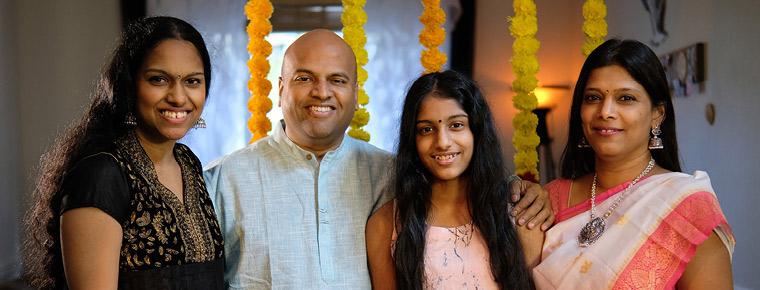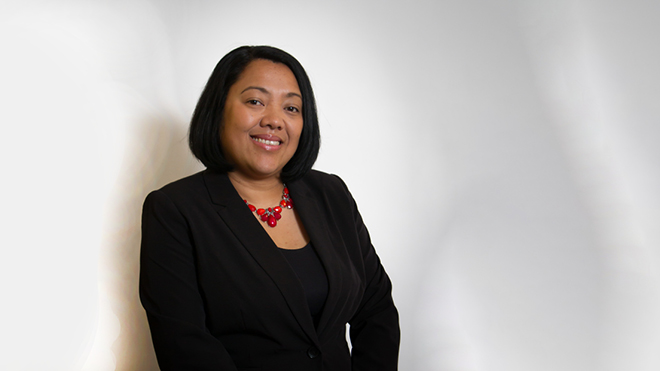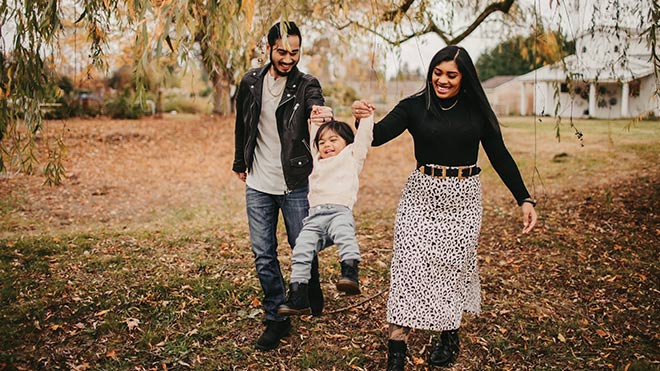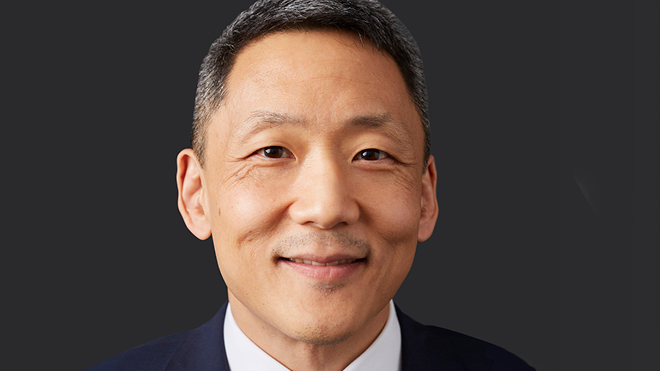
SVP Values Diversity of Asian Experiences
An Indian immigrant who came to the U.S. in the 1990s to support a rapid growth in technology, BECU SVP Balaji Ponnuswamy recognizes a range of diverse experiences for Asian people.
When Balaji Ponnuswamy was growing up, he didn't have much need to refer to himself as Asian. The broad racial category wasn't especially useful in his close-knit community. He was more likely to refer to himself as Indian — more specifically, South Indian, from the city of Chennai, formerly known as Madras.
After moving to the U.S., he started referring to himself as South Asian more often, mostly because people he interacted with were unfamiliar with his hometown or the diversity of cultures and traditions in India alone. But the term "Asian," as used in the U.S., didn't quite fit.
"Growing up and learning geography, I understood that India is part of the Asian continent," said Ponnuswamy, BECU SVP of Product Development and Management. "But when people talk about Asians in the U.S., I find they typically aren't including me."
Yet, statistics used to describe Asian populations often do include Indians. Those statistics can skew perceptions of the broad range of experiences that fall under the label "Asian" and the larger umbrella, "ANHPI," which stands for Asian, Native Hawaiian and Pacific Islander.
Broad Range of Financial Well-Being
Collectively, Asians are the fastest growing racial or ethnic group in the U.S., according to the Pew Research Center, growing to 24 million people with roots in more than 20 countries.
Asian Americans have higher incomes and more education, on average, than all U.S. households, according to Pew Research. But looking at the statistics alone could hide the reality that Asians have the largest income gap of any racial and ethnic groups in the U.S. This could make the needs of people at the lower end of the economic spectrum less visible, reinforcing the stereotype of Asians as the model minority.
Indians, for example, are at the top of the U.S. median household income range, earning an average of $123,700 as of 2021, while Bhutanese earned $49,854, according to the New York Times. The national median household income for all Americans was $63,922 that year.
"What happens a lot in government and other places is we don't see the bottom 10% as much as we see the top 10%," economist Sonal Shah said in a Knowledge at Wharton podcast. "It's the lack of access to finance, the lack of opportunity, the lack of being even seen in the diversity space because you get lumped into this sort of bigger category of being the successful minority group."
Indian immigrants are about 6% of the U.S. foreign-born population and the second-largest immigrant group after Mexicans, according to the Migration Policy Institute.
Ponnuswamy came to the U.S. in 1998 as an employee of Infosys, a global technology company. He earned a moderate income by U.S. standards, but his salary was a big increase from what he would have earned in India. He was among the influx of Indian immigrants recruited by corporations to support the booming tech sector. He describes it as being part of the "IT offshoring wave."
In the early 1990s, the Indian government opened the country to a free market economy, inviting a huge increase in foreign brands and businesses, especially in the technology sector.
"By the mid-1990s, the power of what Indian low-cost, but highly educated labor could do in the IT space was established," Ponnuswamy said. "Companies were going to engineering colleges looking for computer science and electronics graduates, but there weren't enough. With ever-increasing demand in the IT space, the companies started looking for any kind of engineering graduates, not just those specializing in computer science."
He recalls there were 39 engineering colleges in his state of Tamil Nadu in 1993. By the time he graduated, that number had doubled, and his state alone is now nearing 500 colleges. Even so, the competition to get into top engineering schools is fierce, Ponnuswamy said.
The number of Indians in tech in the U.S. has grown exponentially: In 1994, foreign-born people held 9% of computer science jobs in the U.S. By 2012, the number rose to 24%, with most positions held by Indians, according to the Center for Global Development. By 2014, 70% of the H-1B visas and 86% of computer science H-1Bs were held by Indians.
H-1B visas are temporary work visas for highly skilled workers. They are considered a non-immigrant document, even though many people with these types of visas work in their jobs in the U.S. for decades. Recent tech layoffs have had an outsized effect on Indian workers and their families. By some estimates, 30% of those laid off by tech companies hold these visas, according to a Fortune magazine article. They have 60 days to find another visa-sponsored job or leave the country.
Different Experiences for Different Cultures
Before he came to the U.S. for his job with Infosys, Ponnuswamy had never lived away from home. His commute to college was a five-minute bicycle ride.
He arrived in the middle of winter in Kansas. He didn't have a car to drive anywhere.
"It was a little depressing," Ponnuswamy said. "I thought I'd head back to India after six months, but the job went on for two years."
He started making friends, including Gayathri, the woman he would later marry.
"We were a group of five friends living in two apartments," he said. "They became the family we hung out with. It made it a lot of fun."
In 2006, he joined his wife in Richmond, Virginia, for a job at Capital One. Now, he and his wife have two daughters and live in Sammamish, Washington.
When asked about his experience of racism or discriminatory treatment, Ponnuswamy, at first, said it wasn't something that has really affected him — certainly not like the anti-Asian racism he knows East Asians have experienced, especially at the height of the COVID-19 pandemic.
There was the time he was standing in a Wal-Mart checkout line, and someone accused him and his friends of coming to the U.S. to take American jobs.
"It didn't bother me," he said. "I was doing my job here. I was new in the country, so I didn't understand it. Now I recognize it for what it was."
He emphasized that he would never compare his experience to more challenging experiences others might have been subjected to because of their race or ethnicity.
Ponnuswamy focuses more on the importance of recognizing that others do suffer significant, sometimes violent acts of racism. It's not just individual occurrences from individual people, but a systemic, societal issue.
"It feels like a regression is happening," he said. "It isn't about whether a lot of people are part of it or the disparate impacts. We need to have a systems view to understand and address the negative and compounding impact of racism over long periods of time."


